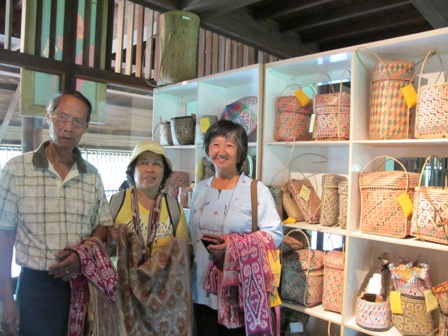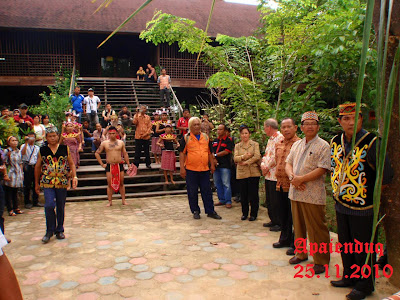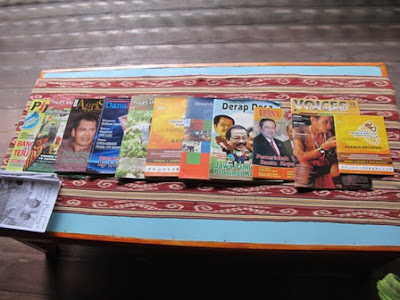The river Kapuas and the equator
The Kobus foundation is located in the Sintang regency in the province of West Borneo (Kalimantan Barat). The administrative centre of the regency is located in one of the many small towns and villages built inland along the banks of the river Kapuas, right on the equator, around 395 kilometers east of Pontianak. Much of the local transport takes place with river boats.
The roads in Kalimantan are poor. Even the main arterial route from west to east Kalimantan is little more than a single lane road with some asphalt in between the gaping potholes. Despite this, Kalimantan Barat is an important and very attractive province, rich in history, culture and places of interest for the visitor. The area of the province is large. Java and Madura together would fit into Kalimantan Barat with room to spare.
Most of the area is mountainous. In the Muller mountains to the east and the Schwaner mountains to the southeast, minerals such as gold, mercury, manganese, bauxite, gypsum and kaolin are to be found. Important rivers in the province are the Kapuas, Sambas, Sekayam, Landak, Melawi and Pawan.
Bandung
Rivers are very important - they are a part of people's daily lives. There are even floating houses called bandung. They are not only places for dwelling but also important transportation means for the people. In the bandung they move from place to place, sailing up and down the river and stopping at villages to trade. As in other tropical areas, activities are often halted due to flooding. The rain can for instance interrupt the rubber tapping which is an important source of income.
Sintang
The name Sintang is derive from ‘senetang', which in the local Daya language means ‘a place near a river with its tributary'. The founder of Sintang is held to be a certain, Demang Irawan, alias Jubairi, the eleventh descendant of Aji Melayu, who is revered as a very wise and brave king in the Sepauk region. Aji Melayu was probably a very wealthy man. Among the remains of his kingdom are Batu Pujaan (sacred stone), the Batu Kabut (misty stone), both of which bear an image of the Buddha. All these, as well as Aji Melayu's grave, can be seen in Nanga Sepuak.
Sintang also boast several sites of historical interest. Among them are the Sintang Museum which is the former palace of Sintang kingdom, built in 1937 by Panembahan Raden Abdul Bahri Danu Perdana. The kingdom's symbol, in the shape of an eagle, is preserved in the museum today together with seven cannons.
Besides the museum, there is also Batu Kundur or Lingga, a monument from Hindu period. Also of interest is a bronze statue or Putung Kempat (Gusar) which is to be found in Pari Empahan, 64 kilometers from Nanga Sepuak. The Dara Juanti Museum lies at the north side of the town. Dara Juanti or Dewi Juanti is the name of a woman descendant of the Raja Sintang Dayak tribe who founded the kingdom and moved the capital from Sepuak to Sintang. She took control of the kingdom after her elder brother, Demang Nutup, titled Sultan Jubair II, was captured and imprisoned on a trip to Majapahit, named Patih Logender. The remainders of the kingdom, including a kris from Majapahit, a sheet of cindai cloth called Gerising Wayang, and the statue of an eagle, are preserved in this museum.

Kobus Wild Life Park
The dark green area right of centre in the picture at the top of this article is a small area of primal rain forest which has been designated as a nature reserve by the regional government.
This area is destined to become a wildlife park. Unfortunately, little by little illegal developments encroach on the borders. The area is becoming smaller day by day.
Why? Because the local population are poor. Because their forests have been taken away from them. What is left? Why leave land unused if you can make a living from it?
The proposed wildlife park could change this. It can provide a home for the orang-utan and the other animals displaced by forest destruction in other areas. By charging for (restricted) admissions it can also generate income for the local population. But to implement the wildlife park, investment is needed. Cages, for instance, need to be built to transport animals to their new home.
|





No comments:
Post a Comment